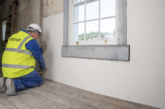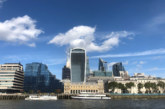Richard Tibenham, Business Development Manager at built environment climate tech firm, IES, discusses what climate change and its subsequent unusual weather conditions mean for building energy use and future town and urban planning.
This week, the UK is experiencing a heatwave in which temperatures are expected to exceed 41 degrees in parts of the country. Temperatures of these extremes are highly unusual for the time of year. Experts are warning that climate change is the driver behind these unusual weather patterns, which we can only expect to become more frequent and more intense as the globe warms — we are already 30% more likely to experience heatwaves than in 1750 due to higher concentrations of carbon particles in the atmosphere.
While we enjoy the sunshine across the UK this week, it is imperative to consider what is causing the heatwave and what the implications of more extreme weather patterns will be in the future. Historically, the UK’s primary challenge has been keeping buildings affordably warm in the winter and this is still the case, highlighted by the ongoing cost-of-living crisis, but summertime overheating is now a growing concern.
Recent changes to Part L and O of the Building Regulations place greater emphasis on the balance between operational energy demand, carbon emissions and summertime overheating risks. However, these regulations are not enough if we are to prepare the UK for a net zero future against a backdrop of rising summer temperatures and those looking to deliver high levels of year-round environmental quality will need to go over and above Building Regulations.
An accurate predictive energy model is a critical component in any low/zero carbon design. Without this level of information, design teams are working without an accurate compass, which inevitably leads to underperformance issues.
Physics-driven building modelling can be used to test sustainable measures for keeping buildings cool enough during the summer whilst providing low operational energy demands year-round. This will not only keep operating costs and emissions to a minimum but will also improve the comfort and well-being of building occupants.
On a broader scale, town and urban planning needs to account for heatwaves and other weather events. Concrete and other building materials absorb heat, meaning that our cities are hotter than the countryside. This week, London is set to be hotter than Jamaica and health warnings are in place due to the extreme heat. If temperatures continue to climb over the coming years, there is a danger of cities becoming unhealthy places to live.
Technology-informed urban planning tools that predict accurately how the built environment will operate under extreme weather conditions need to be integrated into every RIBA design stage to mitigate the health impacts of climate change as much as possible in urban areas.









